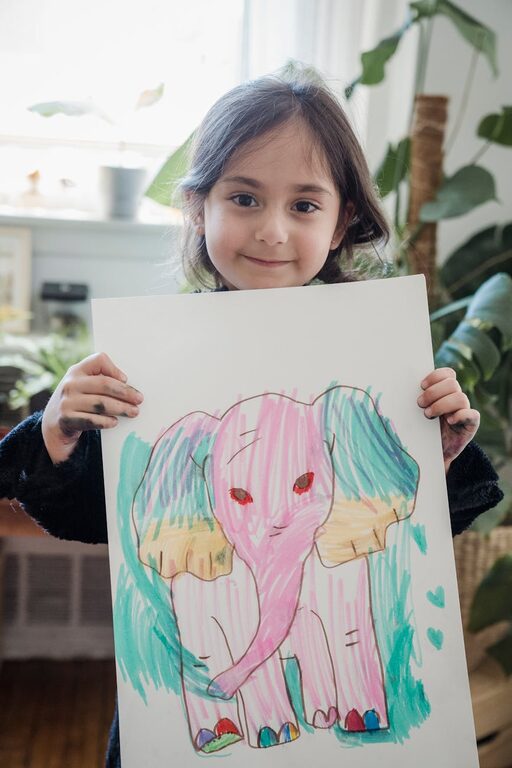Children’s artwork is wonderfully creative and heartwarming, but it can quickly accumulate into a cluttered collection that’s hard to manage. From colorful drawings to 3D crafts, keeping kids’ art organized not only saves space but also helps preserve treasured memories. In this post, we’ll explore practical, easy-to-follow tips to organize your child’s art effectively, so you can enjoy their creativity without the mess.
Why Organizing Kids’ Art Matters
Before diving into the tips, it’s helpful to understand why organizing kids’ artwork is beneficial:
– Reduces clutter: Keeps your home tidy and prevents piles of paper from taking over.
– Preserves memories: Protects delicate art from damage and loss.
– Encourages creativity: A neat, accessible collection can inspire your child to create more.
– Eases decision-making: Makes sorting through items simpler when it’s time to declutter.
Now, let’s move on to practical ways to keep the artwork neat and cherished.
Create a Dedicated Art Storage Space
Use Bins or Boxes
Start by selecting a container to hold your child’s artwork. Large plastic bins, decorative boxes, or even magazine holders work well.
– Label the container: Include your child’s name and the year.
– Sort by date or type: Keep drawings separate from crafts or paintings.
– Keep it accessible: Store it in a low cabinet or shelf so your child can contribute easily.
Art Portfolios
For flat artwork, art portfolios designed with clear sleeves provide organized and protective storage.
– Portfolios come in various sizes and can fit under beds or stand vertically.
– Encourage your child to add new pieces regularly.
Display Favorites Creatively
Showcasing art can be part of your organizing system, making your child feel proud while keeping art visible yet controlled.
Rotating Gallery Wall
– Use clipboards, frames, or wire with clips on a wall to display recent creations.
– Rotate artwork monthly to keep the display fresh and manageable.
Digital Displays
– Take photos of larger or 3D projects.
– Create digital slideshows or use a digital photo frame to enjoy them without clutter.
Go Digital: Preserve Art Without the Bulk
Digitizing artwork is a space-saving way to keep every creation.
Tips for Digitizing:
– Use a scanner or smartphone camera to capture images.
– Store images in organized folders by date or theme on your computer or cloud service.
– Create photo books or collages to enjoy the art offline.
Organize by Time and Importance
Not every piece needs to be kept forever. Develop a system to decide what to keep and what to part with.
Sorting Method
– Keep: Special pieces that mark milestones or your child’s favorite works.
– Discard or Recycle: Items that are damaged or repetitive.
– Digitize and Let Go: For the bulk of the items, save a photo and recycle the original.
Established boundaries reduce overwhelm and help you focus on meaningful pieces.
Encourage Kids to Participate
Involve your children in organizing their art to teach responsibility and decision-making.
– Make organizing a fun activity.
– Let them choose which pieces to display, store, or digitize.
– Create labeled folders or bins so they can file artwork themselves.
Use Art Supply Organizers for Ongoing Creativity
Keeping art supplies neat supports a tidy art area and less messy finished products.
– Use caddies, jars, or drawers labeled for crayons, paints, brushes, and paper.
– Allocate a dedicated craft table or corner for projects.
Repurpose Art in Creative Ways
Transform artwork into useful or decorative items, which also helps reduce clutter.
Ideas to Try:
– Turn drawings into greeting cards or gift wrap.
– Laminate favorite pieces as placemats.
– Use artwork as covers for homemade notebooks.
– Frame art to decorate your home or gifts for family members.
Set a Regular Schedule for Decluttering
Routine organization prevents build-up.
– Plan quarterly or biannual “art review days.”
– Go through stored artwork together.
– Update storage, digitize new projects, and recycle excess.
Final Thoughts
Organizing your child’s artwork doesn’t have to be a daunting task. With a clear system in place, you’ll be able to cherish their creativity while keeping your space neat and inviting. Whether you store art digitally or in physical portfolios, the goal is to celebrate expression and create lasting memories in an organized way.
Happy organizing!

